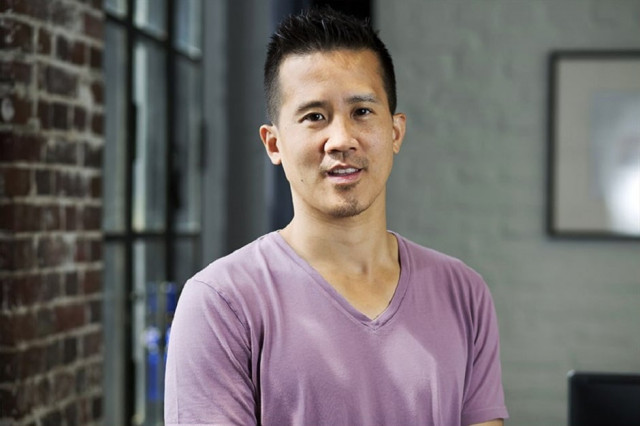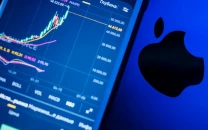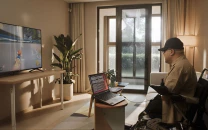He started his company in a basement. Now it’s worth over a hundred million dollars
Glispa accounted for approximately 400 billion ad impressions, reaching 1 billion active users every month

Glispa CEO Gary Lin. PHOTO: GLISPA
In fact, it’s predicted that advertising spend on mobile phones will account for over 70 percent of all digital marketing budgets, reaching a colossal US$195.5 billion by 2019.
And it’s not difficult to see why. Smartphones already account for a higher slice of ecommerce traffic than computers, with the proportion expected to rise to 60 percent by the end of 2017.
Gary Lin accurately predicted these trends around a decade ago. He started ad tech firm Glispa in 2008 with the intention to optimize digital advertising by making it easier for developers to acquire new users and keep them engaged.
5 reports every early startup must generate to stay alive
Gary started out with web-based ad solutions, but the team recognized early on that mobile traffic would be the future of advertising. It helped that the startup generated revenue from an early stage and was quietly able to expand its team until it grew into a digital marketing behemoth.
The Berlin-headquartered company now has 250 employees in eight offices across the world, including Singapore, Tel Aviv, Beijing, and Bangalore. But it started in the basement of a generic building in the German capital.
Along the way, it’s helped tech giants like Alibaba, OLX, Foodpanda, Tiket, Bukalapak, and Tokopedia.
“Glispa helped Tiket acquire high-quality mobile users and increase engagement for travel bookings,” explains Gary of the Indonesian startup. “Tiket wanted to improve mobile app growth and sought to secure additional visibility for their Android app.”.
In 2015, Glispa accounted for approximately 400 billion ad impressions, reaching 1 billion active users every month.
No VC funding
The mind-boggling corollary to Glispa’s meteoric rise is that it’s never accepted any external funding. It sold a 75 percent stake to Market Tech, a UK-based firm, last year for US$77 million but that remains its sole investment round. Till then the company was entirely bootstrapped.
Gary’s not really a fan of VC-fueled businesses. His advice to bootstrapped entrepreneurs is don’t look to raise money at all.
This startup wants to make building websites as simple as chatting
“I set out to create a profitable business […] Everyone at Glispa has their own KPI dashboard; looking at profitability is completely transparent. Everyone in the company knows where we are and is clearly focused on where we are headed,” he explains.
There’s no word on Glispa’s revenues but Venturebeat reported it closed 2015 with total cash intake of above US$100 million.
Digital growth in Southeast Asia
Gary believes Southeast Asia is a relative latecomer to the global digital scene but is confident that there’s immense opportunity ahead.
“For example, in Indonesia, spending on digital media was just 7.3 percent in 2015. However, this is expected to triple within the next three years, with mobile internet ad spending in the country growing at triple-digit rates,” he outlines.
With smartphone penetration in Singapore already higher than that of the US, and expected to surge to 57 percent in Malaysia and 50 percent in Thailand by 2018, it’s clear the focus on mobile will undoubtedly strengthen.
And he thinks Southeast Asia deserves more attention than the larger markets of China and India.
“It is Southeast Asia which has the higher growth rates. Over the next five to 10 years it will become increasingly important, which presents a lot of opportunities for those who can adapt quickly. Real-time data will continue to be key, and a big part of that will be determining how it fits into native, programmatically-delivered formats,” adds Gary.
Building companies at scale
So what’s the secret behind maintaining team cohesion and inculcating a performance-driven culture?
7 things to know before signing your startup offer letter
For one, it’s a policy of honesty that Gary’s strived to instill. Employees at Glispa don’t have to sign any ‘non-compete’ clauses, meaning they’re free to join a competitor firm as and when they please.
“We want people to be able to speak their mind and express their thoughts and opinions,” he told Forbes.
There’s also a desire to lead by example, to be direct in communication, but strive for honesty across all “platforms and territories.”
Glispa’s team is very cosmopolitan. It consists of 45 nationalities that speak 32 different languages, and the millionaire founder believes that’s a strong differentiator to rival firms.
But he’s not easing off just yet. Just this year the ad tech titan has acquired three different startups to give itself muscle and delve deeper into emerging markets such as Brazil.
“By remaining transparent and flexible in everything we did, and establishing a dedicated and diverse team, we were able to grow from a small ad network to the global ad tech company it is today,” smiles Gary.
This article originally appeared on Tech in Asia.


















COMMENTS
Comments are moderated and generally will be posted if they are on-topic and not abusive.
For more information, please see our Comments FAQ